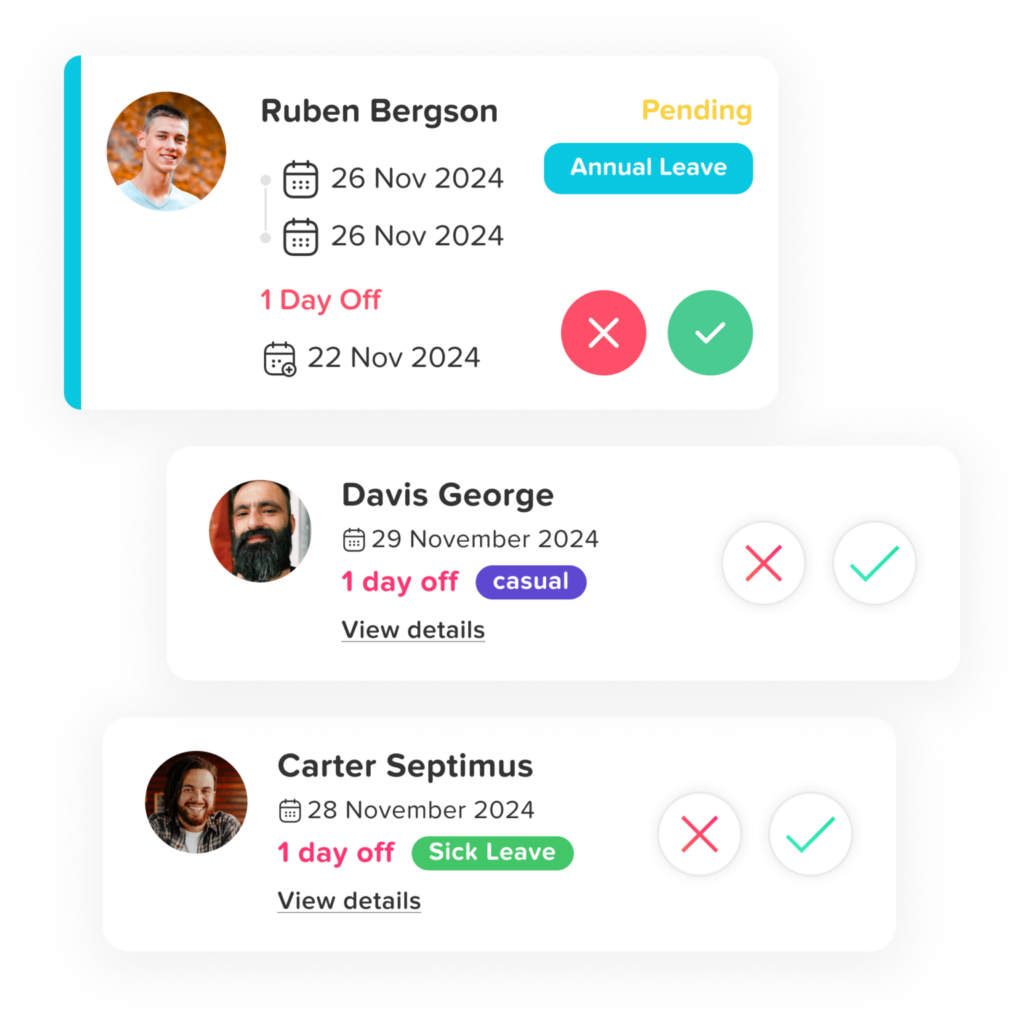Table of Contents
ToggleUnderstanding the number of working days in a month is essential for employees, businesses, and freelancers who rely on structured work schedules, payroll calculations, and productivity planning. The number of working days in any given month varies due to factors like weekends, public holidays, and company-specific work schedules.
Whether you are calculating your salary, planning vacation days, or estimating project deadlines, knowing how many workdays exist in a month can help you manage your time effectively. In this article, we will break down the number of working days per month, the factors that influence this count, and strategies for making the most of your workdays.
Understanding the Basics: How Many Working Days Are There in a Month?
1. Standard Calculation
A standard workweek typically consists of five working days (Monday to Friday), with Saturday and Sunday considered weekends in most industries. However, the exact number of working days in a month depends on how many weekdays (Monday-Friday) fall within that month.
Each month has a fixed number of total days (28 to 31 days), but the distribution of weekdays and weekends varies. Let’s take a look at the general pattern of working days in a month:
| Month | Total Days | Weekdays (M-F) | Weekends (Sat-Sun) | Typical Working Days |
|---|---|---|---|---|
| January | 31 | 23 | 8 | 21-23 |
| February | 28/29 | 20/21 | 8/9 | 19-21 |
| March | 31 | 23 | 8 | 21-23 |
| April | 30 | 22 | 8 | 20-22 |
| May | 31 | 23 | 8 | 21-23 |
| June | 30 | 22 | 8 | 20-22 |
| July | 31 | 23 | 8 | 21-23 |
| August | 31 | 23 | 8 | 21-23 |
| September | 30 | 22 | 8 | 20-22 |
| October | 31 | 23 | 8 | 21-23 |
| November | 30 | 22 | 8 | 20-22 |
| December | 31 | 23 | 8 | 21-23 |
- Shorter months like February (28 or 29 days) naturally have fewer working days.
- Months with 31 days typically have more workdays (usually around 21-23 workdays).
- Months with 30 days have slightly fewer workdays (around 20-22).
2. Factors That Affect the Number of Working Days
A. Weekends (Saturday & Sunday)
Most workplaces do not operate on weekends, reducing the number of available workdays. Since months have different distributions of weekdays and weekends, this affects the work schedule.
For example:
- If the month starts on a Saturday or Sunday, the month may have fewer working days because an extra weekend occurs.
- If the month starts on a Monday or Tuesday, there will be more working days.
B. Public and Company-Specific Holidays
National and local holidays can further reduce the number of working days in a month. For example:
- Federal holidays in the U.S., such as New Year’s Day, Independence Day, and Christmas, result in a day off for most employees.
- Some countries or states have additional public holidays, reducing the total working days even further.
- Company-specific holidays, such as bonus paid leave or office closures, can also influence the final work schedule.
For example, in the U.S.:
- July 4th (Independence Day) is a national holiday. If it falls on a Wednesday, the workweek will have only four working days that week.
- Thanksgiving (fourth Thursday of November) is often paired with an additional holiday on Friday, reducing the total workdays in November.
C. Industry and Work Schedules
Not all industries follow a standard Monday to Friday schedule. Some variations include:
- Retail, healthcare, and service industries often have shifts on weekends, making the concept of “working days” different from corporate office jobs.
- Freelancers and gig workers may work every day of the month, making their workdays flexible and non-traditional.
- Government jobs and corporate sectors usually follow the five-day workweek, making it easier to calculate workdays.
D. Leap Years and February’s Impact
Every four years, February has 29 days instead of 28, adding an extra workday for those following a standard five-day workweek. This means February in a leap year has 21 workdays instead of the usual 20 (excluding holidays).
How to Calculate the Number of Working Days in a Month
Understanding how to calculate the number of working days in a month is essential for scheduling, payroll, project planning, and vacation management. Whether you’re an employee tracking your work schedule or a business planning staffing needs, following a structured approach makes it easy to determine the exact number of workdays.
Step 1: Identify the Total Number of Days in the Month
Each month has a fixed number of total days:
- 28 or 29 days in February (depending on whether it’s a leap year).
- 30 days in April, June, September, and November.
- 31 days in January, March, May, July, August, October, and December.
Knowing this total helps you start the calculation process accurately.
Step 2: Count the Number of Weekends (Saturdays & Sundays)
Most standard work schedules follow a Monday-to-Friday workweek, meaning weekends are non-working days. To determine the number of weekends in a month:
- Identify all Saturdays and Sundays in the given month.
- Subtract these days from the total number of days in the month.
For example, if a month has 30 days and includes 8 weekend days, that leaves 22 potential working days before accounting for holidays.
Step 3: Subtract Public and Company-Specific Holidays
Holidays that fall on weekdays further reduce the number of working days. To get an accurate count:
- Check for national and public holidays in your country.
- Consider company-specific holidays that may not be nationally recognized.
- Subtract these holidays from the remaining weekday count.
Example Calculation – September 2025
Let’s determine the number of working days in September 2025:
- Total days in September: 30
- Weekends (Saturdays & Sundays): 8 days
- Public holidays (Labor Day – Monday, September 1st): 1 day
- Final working days calculation: 30 (total days)−8 (weekend days)−1 (public holiday)=21 working days30 \text{ (total days)} – 8 \text{ (weekend days)} – 1 \text{ (public holiday)} = 21 \text{ working days}30 (total days)−8 (weekend days)−1 (public holiday)=21 working days
This means that in September 2025, there are 21 working days for a standard Monday-to-Friday workweek (assuming no additional company holidays).
Why Knowing Working Days Matters
Understanding the number of working days in a month is important for both employees and businesses. It affects payroll, productivity, project planning, and even vacation decisions. Here’s why it matters:
A. Payroll & Salary Calculations
💰 For hourly employees:
- The number of working days directly determines how many hours you can work in a given month, affecting your paycheck.
- If a month has fewer working days, hourly workers may need to budget accordingly.
💰 For salaried employees:
- While salaries are usually fixed, knowing the number of working days can help you understand how your paycheck is structured—especially if your company adjusts payments based on actual workdays.
For example, some businesses divide salaries by total workdays in a month, meaning a month with 21 workdays results in a slightly different daily rate than a month with 23 workdays.
B. Project Deadlines & Business Planning
🗓 For businesses and freelancers:
- Knowing the exact number of working days helps set realistic deadlines for projects and deliverables.
- If a project deadline is at the end of the month, teams can plan their workload better by considering the actual number of workdays available.
For example, if you assume a month has 22 working days but there are only 19 due to holidays and weekends, failing to plan ahead could lead to missed deadlines.
C. Vacation & Leave Planning
🏖 For employees planning time off:
- Understanding workdays allows employees to strategically schedule their paid time off (PTO) or vacation days.
- Scheduling vacations around holidays can help maximize time off while using fewer leave days.
For example, if a company offers paid holidays for New Year’s Day and an employee takes off January 2-3, they could enjoy a five-day break (including the weekend) while only using two vacation days.
How Can Day Off Help with Managing Working Days?

Managing working days, time off, holidays, and leave tracking can be complex, especially for businesses and employees who need to plan schedules, payroll, and productivity efficiently. Day Off is a powerful tool designed to simplify this process by helping individuals and teams manage their time off seamlessly.
Whether you’re an employer looking to streamline leave management or an employee who wants to track your available vacation days, Day Off offers automation, tracking, and planning features to make your work-life balance easier.
1. Automating the Calculation of Working Days
Instead of manually counting working days, weekends, and public holidays, Day-Off.app can automatically calculate:
- The total number of working days in any given month.
- Adjustments for national and company holidays.
- The impact of personal leave, sick days, or remote workdays on work schedules.
For example, if you need to know how many working days are left in October 2025, Day Off can instantly calculate it, considering weekends and holidays.
2. Leave & Absence Management for Employees and HR Teams
For businesses and HR professionals, Day Off is a time-saving leave management solution that allows employees to:
✅ Request leave with a few clicks.
✅ Check available vacation days at a glance.
✅ See remaining PTO (Paid Time Off) without manually tracking it.
✅ Plan long weekends based on public and personal holidays.
Managers can:
✅ Approve or decline leave requests online.
✅ See team availability in a shared calendar.
✅ Prevent scheduling conflicts by ensuring adequate staffing.
This helps avoid misunderstandings and unnecessary emails about vacation approvals.
3. Customizing Work Schedules for Different Industries
Not all businesses follow a Monday-to-Friday workweek. Some industries, such as healthcare, retail, and hospitality, have different shift structures. Day-Off.app allows companies to:
- Customize work schedules based on industry needs.
- Set up different working days for employees with rotating shifts.
- Adjust working hours for part-time, full-time, and contract workers.
This flexibility makes work planning more accurate and tailored to different business needs.
4. Improving Work-Life Balance with Better Leave Planning
A well-planned time-off strategy helps employees avoid burnout and maintain a healthy work-life balance. With Day Off, employees can:
- Plan vacations around long weekends efficiently.
- Track national & religious holidays to maximize rest days.
- Coordinate time off with team members to avoid schedule conflicts.
For example, if you want to take a 9-day vacation using only 4 leave days, Day Off helps you find the best holiday and weekend combinations.
5. Payroll & Compliance Made Easy
For businesses, Day Off helps with payroll calculations and compliance by:
💰 Tracking unpaid vs. paid leave to ensure accurate payroll processing.
📊 Generating reports on employee attendance to meet HR policies.
⚖ Ensuring compliance with labor laws and company policies.
Instead of manually tracking employee absences, Day Off automates everything, reducing administrative work for HR teams.
Conclusion: Why Use Day Off Leave Tracker?
Managing working days, leave, and absences can be time-consuming and prone to errors. Day Off simplifies this process by providing automatic tracking, easy leave management, and smart scheduling for both employees and employers.
🔹 Employees can track their vacation, sick days, and remaining PTO.
🔹 HR managers can automate leave approvals and ensure proper staffing.
🔹 Businesses can maintain compliance and optimize payroll processing.
If you want a hassle-free way to track working days and leave, Day Off is an efficient and user-friendly solution to improve time management.
🚀 Try Day Off today and simplify your work-life balance!
